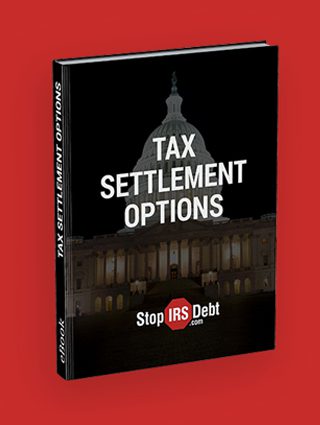- browse by category
- Audit Assistance
- Business and Taxes
- Celebrities in Tax Debt
- Cryptocurrency Taxes
- Economic News
- Foreign Banking
- Innocent Spouse
- IRS Headlines
- IRS Wage Garnishment
- Marriage & Divorce
- Payroll Tax
- Retirement
- Revenue Officers
- State Tax Headlines
- Stop IRS Debt
- Success Stories
- Tax and Politics
- Tax Attorney
- Tax Codes
- Tax Debt Help
- Tax Evasion
- Tax Levy
- Tax Lien
- Tax Payment Plans
- Tax Return Filing
- Tax Tips

As the year winds down, the holiday parties wind up—and 2019 will be here before you know it. As the holiday season comes and goes, corporate America goes wild throwing events and racking up plenty of business expenses.
Yours may have hosted a Christmas or otherwise festive bash, or you might be cheers-ing to another successful year in the books. From company-wide Thanksgiving potlucks to small Q4 thank-you gifts, there are hundreds of unique ways that businesses small and large celebrate the end of the year.
And whatever the occasion, all that celebrating can come with a hefty price tag.
Around this time of year, a lot of folks—business owners in particular—start thinking the same thing: What exactly counts as a business expense?
For most of the year, business owners tend to have a good idea of what does and doesn’t count as a business expense. Paper for the copier? Business expense. That plane ticket to meet investors? Business expense. Your lunch out because you forgot to pack one? Not a business expense.
But for holiday parties and end-of-year festivities, the line gets a bit blurry.
Not everything is deductible, and there are plenty of holiday party red flags that can put you in hot water with the IRS. With that in mind, here’s a guide to deducting business expenses for your business’s holiday party, end-of-year bash, or anything in between!
Know the Rules of Business Expenses
We don’t want to give you the wrong impression: Just about every expense associated with your company’s party can be deducted—if you follow a few rules. Even Uncle Sam knows you need to kick back and unwind every once in a while!
The trick is keeping a few key restrictions in mind as you account for your business expenses. So, we’ll break down each consideration for identifying deductions, and apply them to a hypothetical party.
Welcome to the “2018 End-of-Year Example Party”
1. Make It Nice, but Not Extravagant
The IRS wants your party to be reasonable. Specifically, the IRS says a company can’t deduct expenses that are “lavish or extravagant.” But what does that mean, really?
Well, it doesn’t mean an ice sculpture is out of the question, but it depends. For a company like Disney or Google, a large gathering with a well-known band, ice sculpture, and a rented out space wouldn’t be extravagant. After all, they are multi-billion companies. For fifteen employees, a party like that would not be reasonable. It would be lavish, extravagant—and kind of a waste!
Fortunately, our hypothetical “2018 End-of-Year Example Party” wasn’t beyond our means. We had a group reservation at a local steakhouse, and the company picked up the tab. Lavish or extravagant? Nope! A lovely holiday party? Absolutely.
2. Invite Employees and Spouses, Not the Whole Town
According to the IRS, party hosted for your employees and their families is entirely deductible. Things get complicated once you start sending out invitations more widely.
If you invite a contractor or vendor, your party is no longer 100% deductible. Instead, those guests fall under “Meals and Entertainment” and are 50% deductible—and you’ll also need to include some sort of business-related element to your party. Finally, expenses for family and personal friends aren’t deductible at all. So now you or your CPA will need to break down your holiday party’s expenses between all three groups: employees, business contacts, and your personal guests.
At our “2018 End-of-Year Example Party,” we kept things simple. We only invited our employees and their families, so we were able to deduct 100% of our holiday party expenses. We didn’t want to leave our biggest vendor out in the cold, though, so we held a separate dinner (50% deductible) for them to say thank you and discuss our 2019 plans.
2. Keep Your Receipts—and the Invitation
This shouldn’t come as a surprise, but the IRS loves your receipts almost as much as you might hate them. You’ll want to keep a track of exactly the costs your holiday party incurred, and that starts with the invitation.
Clearly identifying whom your holiday party is for is a big part of staying organized. Make a guest list, identifying the attendees you’re expecting, and clearly listing which group they fall into. Hang onto your receipts, too. In the event of an audit, knowing that 100 of your guests were employees and family while 15 were contractors will save you a big headache.
For our “2018 End-of-Year Example Party,” we kept a file with the invitation and guest list, as well as an itemized receipt from the steakhouse we visited, as well as the cost of a few gift bags we had made. We also kept a separate file for our business partner dinner, organized similarly!
Save on Business Expenses at the Holidays
A company party can be a great way of wishing your team well during the holidays or simply thanking them for another wonderful year. Though the price tag on these festivities can get a bit high, when you approach these business expenses in a thoughtful and organized way, you can save big. In our opinion, there’s no better way to kick off 2019.
Leave Comments

Top Tax
secrets revealed
Sign up for our newsletter and be the first to find out when exciting IRS news happens. Yes, exciting. We're really into taxes.


